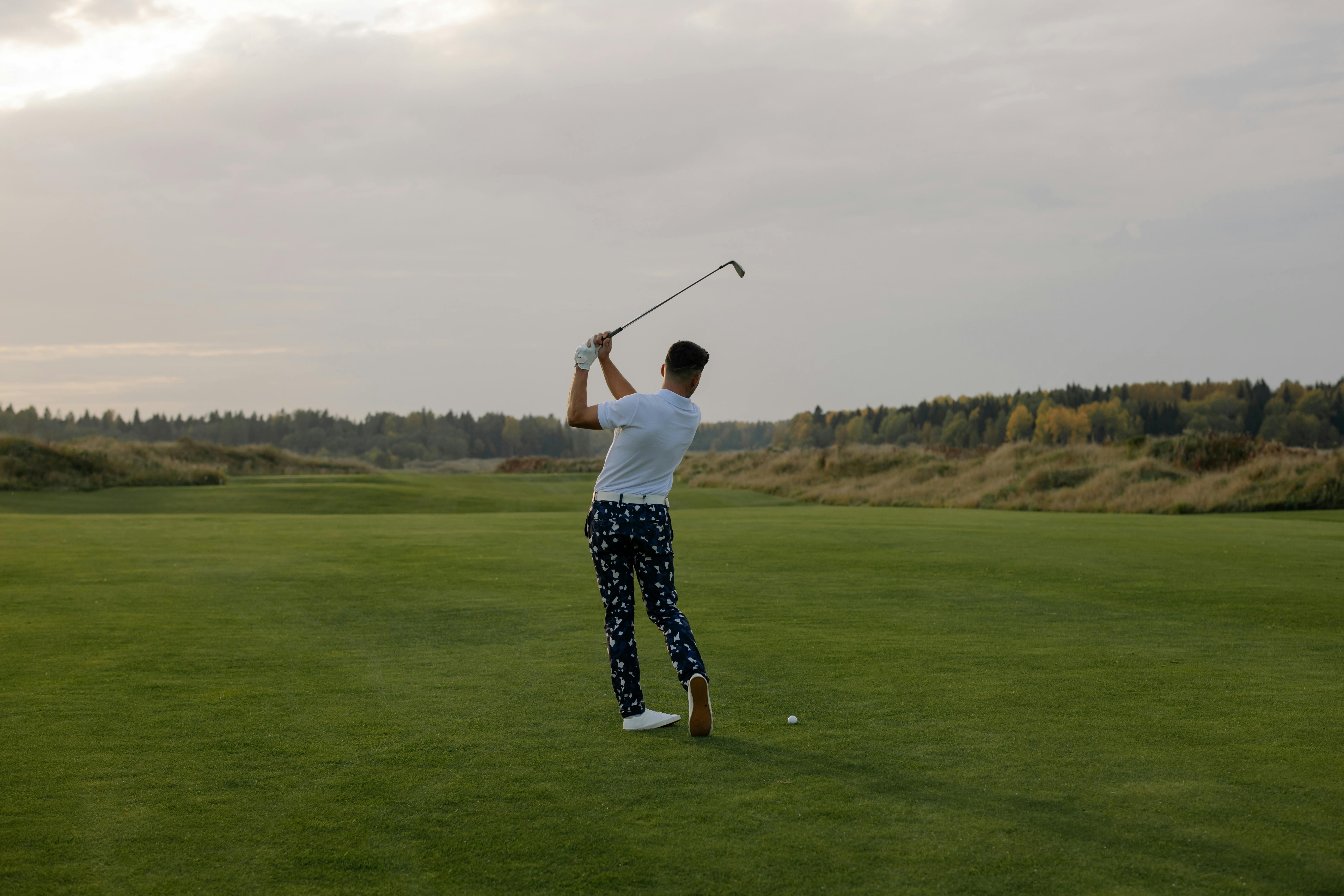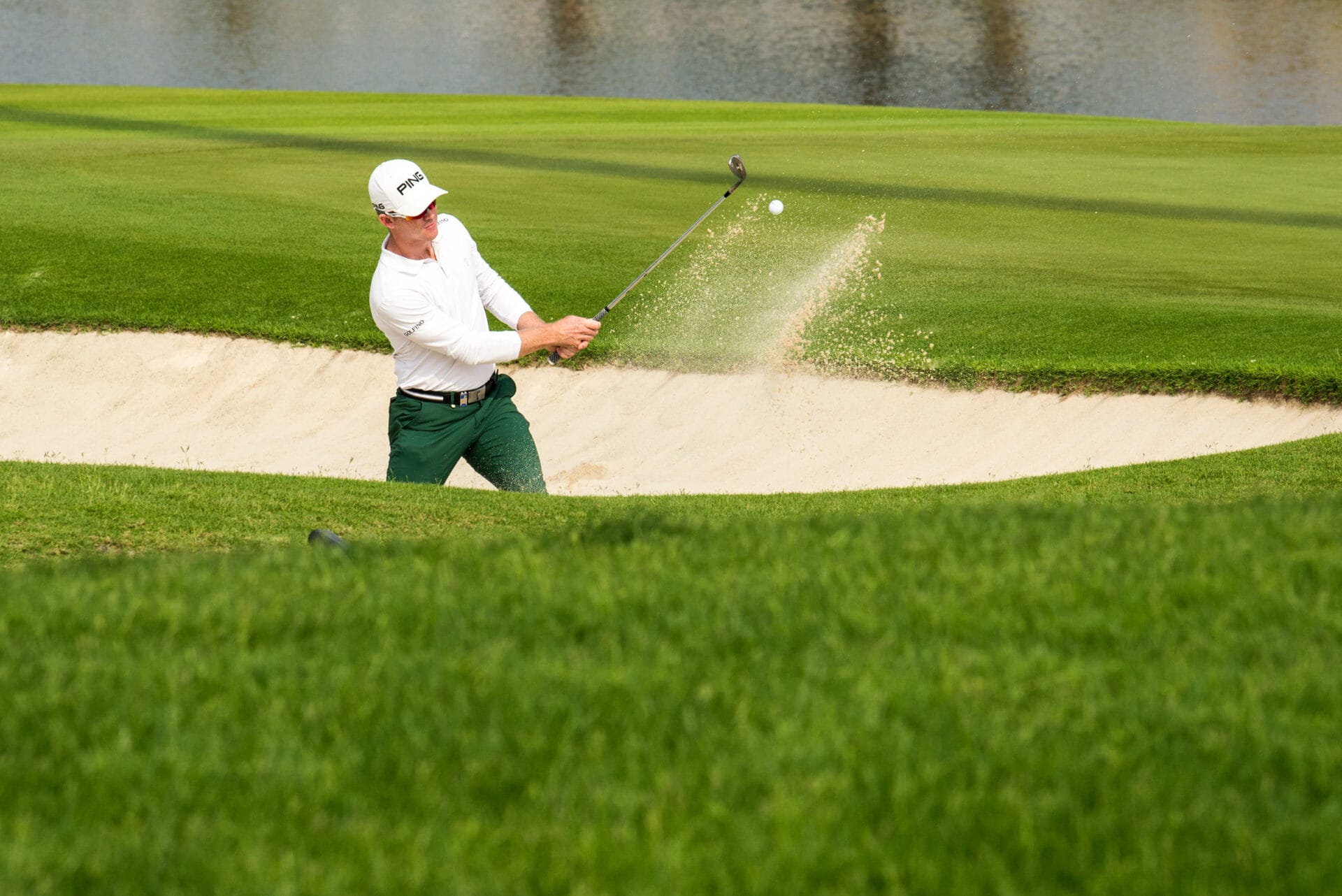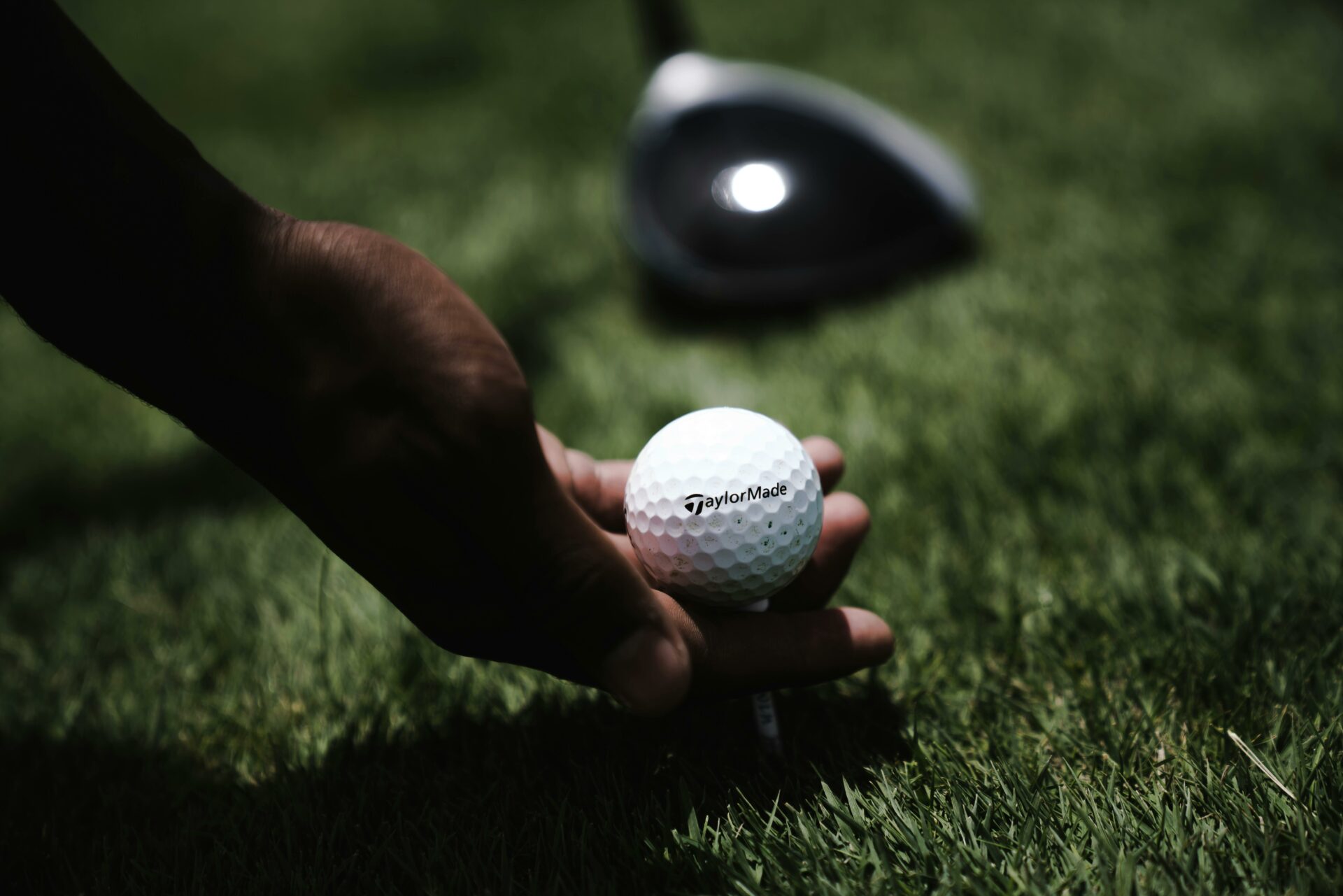If you’re wondering why you’re hitting behind the golf ball, you’re not alone. Many golfers struggle with this issue, and it can lead to frustration on the course. Fortunately, understanding why you’re hitting behind the golf ball and making a few simple changes can help get your game back on track. In this article, we’ll discuss some of the causes of hitting behind the golf ball as well as how to fix them. With a bit of practice and a few tips in mind, you’ll be back on top of your swing in no time!Hitting behind the golf ball is caused by a number of factors, including poor swing mechanics, incorrect alignment or posture, improper club selection, and poor weight distribution. Poor swing mechanics such as an overly long backswing or excessive body movement can cause the golfer to hit behind the ball. Incorrect alignment or posture can also lead to a golfer inadvertently hitting behind the ball, as can improper club selection. Finally, incorrect weight distribution during the swing can lead to an inability to make solid contact with the ball.
Understanding The Swing Plane
Golf is a game where technique is paramount. One of the most important things to understand when playing golf is the swing plane. The swing plane is the path that the golf club follows as it moves through the air, from beginning to end. It’s important for golfers to understand how to properly maintain and control their swing plane in order to hit the ball accurately and consistently.
The swing plane can be visualized as an imaginary wall, or a line that extends up from the ground and runs parallel to the target line. The target line is the straight line that runs from the ball out towards your intended target. When you address your ball, you should take a moment to check your alignment and make sure that your club face and feet are square with this line. This will ensure that your swing plane remains on track throughout your backswing and downswing.
Once you’ve set up correctly, it’s very important to keep your swing on plane throughout both your backswing and downswing. This means that you should keep the club head moving along this imaginary wall in a consistent arc as you move through each part of your swing. If you start swaying off-plane during either part of your swing, it will be more difficult for you to hit accurate shots.
In order to help maintain a consistent swing plane, many golfers use alignment rods or sticks during their practice sessions. These rods are placed perpendicular to each other in front of where you’re standing, and can help serve as visual reminders for keeping on-plane throughout each part of your swing. This can be especially helpful when practicing with new clubs or working on mastering new techniques.
Maintaining a consistent and controlled swing plane is essential for any golfer looking to improve their game. It takes time and practice to master this technique, but with dedication and hard work it can be done! With enough practice, any golfer can learn how to stay on-plane during their swings in order to hit more accurate shots with greater consistency.
The Role Of Alignment In Hitting Behind The Ball
The importance of alignment in hitting the ball cannot be overstated. Proper alignment is the key to achieving power and accuracy when hitting the ball. When a batter is properly aligned, it allows them to generate more power and control the direction of their swing. Proper alignment also ensures that the player is in the best position to make contact with the ball.
Alignment starts with the feet and legs. The feet should be positioned slightly wider than shoulder width apart, and slightly turned in towards the plate. This puts the batter in an athletic stance that allows for quick movement and balance when swinging. The knees should be bent slightly to maintain balance, while the hips should remain low and level with each other.
The upper body should also be properly aligned. The shoulders should remain parallel with home plate, while the head should stay centered over top of them. The arms should hang loosely at either side of the body, as this will allow them to move freely during a swing without any stiffness or tension. Additionally, it is important for a batter to keep their wrists cocked back slightly as this will help them generate more power on their swing.
Finally, proper hand placement is essential for good alignment when hitting behind the ball. The hands should be placed just above waist height so that there is room for them to move freely during a swing without any obstruction from other parts of the body. Additionally, having a firm grip on both hands will help ensure that they can make contact with the ball consistently each time they swing.
In summary, proper alignment plays an essential role in hitting behind the ball successfully. It helps batters generate power and control their swings, while also ensuring that they are in position to make consistent contact with each pitch they see. With good alignment comes good results at home plate!
Body Position And Weight Transfer
In order to be successful at driving a race car, it is important to understand the proper body position and weight transfer techniques. The ideal body position for driving a race car is to be as close to the center of gravity as possible, which will allow for maximum control and stability. When driving a race car, the driver should keep both feet firmly planted on the floorboard of the vehicle. This will ensure that all of the driver’s weight is transferred evenly throughout the vehicle. Additionally, keeping both hands firmly gripping the steering wheel allows for more precise control over turns and sharp corners.
When shifting gears, it is important to make sure that all of your weight is shifted into your left foot while your right foot remains on the gas pedal. This allows for an even weight distribution and keeps your left foot from becoming strained from pushing too hard on the clutch pedal. Furthermore, when accelerating or braking, it is important to make sure that you are shifting your weight forward or backward in order to maintain balance throughout the car. This helps ensure that you have maximum control when taking turns or sharp corners at high speeds.
It is also important to understand how weight transfer affects traction in a race car. When cornering, transferring your weight towards the outside corner of the car will increase grip and traction on that side of your vehicle. Conversely, when accelerating out of a turn or going downhill, transferring your weight towards the inside corner will increase grip and traction on that side of your vehicle. By understanding how these basic principles work together, drivers can become more proficient at navigating tight turns and difficult courses with maximum control and precision.
Overall, understanding proper body position and weight transfer techniques are essential when driving a race car in order to remain safe and achieve optimal performance levels. By following these guidelines consistently with each race you enter into, you can become an expert driver in no time!
Hitting Behind The Ball
Hitting behind the ball is one of the most common mistakes that amateur golfers make. It’s when you don’t hit the ball squarely on the sweet spot, instead you either hit it before or after the sweet spot, causing a weak shot. This can be caused by many things, such as not having proper posture, poor swing mechanics, or an incorrect grip. If you find yourself hitting behind the ball consistently, here are some steps you can take to fix it.
The first step in fixing your swing is to make sure that your posture is correct. Your head should be centered over your feet and your spine should be straight. This will help ensure that you are in a good position to make a solid swing.
Next, take a look at your grip and make sure it is correct. Your left hand should be slightly lower than your right hand when gripping the club and your hands should form an “L” shape when looking down at them from above. Having the correct grip will help ensure that the clubface is square at impact with the ball and will help reduce any chances of hitting behind it.
Finally, take a look at your swing mechanics and make sure they are also correct. Make sure that you are swinging back along your body line and that you are making a proper turn with your shoulders on both sides of your swing. This will help ensure that you have enough power to get through the ball correctly and hit it squarely on its sweet spot.
By following these steps and making sure that all of these elements of your game are in order, you can start to see an improvement in how well you hit the ball and reduce any chances of hitting behind it. With practice and dedication, hitting behind the ball should soon become a thing of the past!

Over-Rotation Of The Clubhead
Over-rotation of the clubhead is a common problem in golf. It is when the clubface is open at impact, resulting in an off-center hit. This can cause the ball to slice or hook, leading to inaccurate and inconsistent shots. To correct this issue, golfers need to focus on their grip, stance, posture and backswing.
A proper grip will help ensure that the clubhead is not over-rotating at impact. The golfer should establish a neutral grip with both hands and make sure that his wrists are not bent too much when addressing the ball. A correct stance will also be beneficial in keeping the clubface from opening too much during the swing. The golfer should stand with his feet shoulder-width apart and his weight evenly distributed between both feet.
Good posture is essential for preventing over-rotation of the clubhead as well. The golfer should keep his head still throughout the swing and maintain a bend in the knees while keeping his back straight. This will help ensure that he remains balanced throughout the motion of the swing.
Finally, a proper backswing can help reduce over-rotation of the clubhead by creating a smooth transition from takeaway to downswing. During this transition, it is important for golfers to remember to keep their arms close to their body and move their hands up and down rather than across their body during their takeaway and follow through respectively. This will help keep them on plane and avoid an early release of their wrists leading to an open clubface at impact.
By focusing on these areas of improvement, golfers can prevent over-rotation of the clubhead while swinging and produce more accurate shots with greater consistency.
Choosing A Driver That Suits Your Swing Path
Golfers know that choosing the right driver is essential to their game. Each golfer has a unique swing path and it’s important to choose a driver that matches your swing path for maximum performance. Drivers come in a variety of shapes, sizes, and designs, so it can be difficult to decide which one is best for you. It’s important to understand the basics of swing paths so you can choose a driver that will help you reach your goals on the course.
There are three main types of swing paths: draw, fade, and straight. Draw swings are those that start out right and move left as they hit the ball. Fade swings are those that start out left and move right as they hit the ball. Straight swings are those that stay on line with little or no movement from side to side as they hit the ball. Knowing which type of swing path you have will help you choose a driver that will fit your game.
Once you know your swing path, it’s important to consider other factors when choosing a driver such as loft angle, head size, shaft length, and weight. Loft angle is the angle of the club face when it contacts the ball – higher loft angles result in higher shots while lower loft angles result in lower shots. Head size affects how much energy is transferred from your club face to the ball – larger heads transfer more energy while smaller heads transfer less energy.
Shaft length affects how far you can hit the ball – longer shafts give more distance while shorter shafts give less distance but better accuracy. Weight affects how easy it is to control your club during your swing – lighter clubs require more effort but offer more control while heavier clubs require less effort but offer less control.
These factors all need to be taken into consideration when choosing a driver that suits your swing path. You may find that one type of driver works better for one type of shot than another so don’t be afraid to experiment with different drivers until you find one that works best for you. Or if you don’t want to experiment yourself, get help from an expert who can take into account all these factors and recommend drivers based on your individual needs. With some research and practice, you can find a driver that suits your swing path perfectly!
Adjusting Your Tee Height
Golfers need to adjust the tee height for different clubs in order to maximize their performance. Adjusting the tee height can have a significant impact on both the distance and trajectory of your shots. A higher tee will launch the ball higher, while a lower tee will give you more distance. It is important to understand how different clubs require different tee heights in order to get the best performance from each club.
For drivers, you should use a higher tee because it will help you launch the ball higher and with more backspin. This will help you hit longer drives with less effort. When using your driver, it is important to make sure that your tee height is just right so that you can get maximum distance without sacrificing accuracy.
When using an iron, you should use a lower tee because this will help reduce spin and give you more control over your shots. A lower tee will also help keep the ball flight lower which is beneficial when trying to avoid obstacles on the course. It is important to note that using too low of a tee with an iron could cause issues with accuracy, so it is important to find the right balance between distance and accuracy when adjusting your iron’s tee height.
Finally, when using a hybrid club, somewhere in between a driver and an iron would be best. Generally speaking, hybrids should have slightly higher tees than irons but still lower than drivers for optimum performance. Hybrids are very versatile clubs that can be used in many different situations and having the right amount of backspin and trajectory can make all the difference when playing from tricky lies.
In conclusion, adjusting your tee height for different clubs can have significant impacts on both distance and trajectory. Make sure to experiment with different heights until you find what works best for each club in order to maximize performance on the course!

Conclusion
Hitting behind the golf ball is a common problem for golfers of all levels. It can be caused by a number of factors, such as poor alignment, incorrect swing path, incorrect swing plane, and poor contact with the ball. It is important to understand why you are hitting behind the golf ball so that you can make the necessary adjustments to your game. The best way to do this is to have an experienced coach watch your swing and provide feedback on what needs to be improved.
Once you understand why you are hitting behind the ball, it is important to make sure that you practice with purpose and focus on making the right adjustments in order to correct this issue. Practicing regularly with a consistent swing will help you get out of this problem and enjoy a better golf game.
In conclusion, hitting behind the golf ball can be frustrating but it doesn’t have to be an issue that cannot be fixed. With proper practice and understanding of why this issue might be happening, it is possible to fix this issue and enjoy a better golf game in no time at all.




